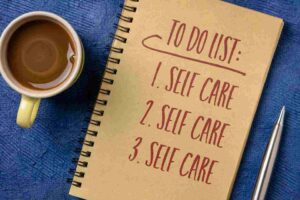Work-life balance is a concept that has gained significant attention in recent years, as the demands of modern life seem to increase constantly. It refers to the equilibrium between personal life and professional commitments, ensuring that neither aspect overshadows the other. Achieving work-life balance is essential for overall well-being and happiness. Having a healthy work-life balance, you can experience greater fulfilment, reduced stress levels, and improved physical and mental health.
The importance of work life balance
Work life balance is crucial for maintaining a healthy and fulfilling life. It allows you to allocate time and energy to both your personal and professional spheres, ensuring that you don’t neglect one for the other. Work taking over your life can lead to burnout, increased stress, strained relationships, and compromised health. On the other hand, prioritising your personal life at the expense of your career may hinder your professional growth and financial stability.
Work-life balance statistics

Statistics show that work-life balance is a pressing issue in today’s society. According to a survey by the American Psychological Association, 61% of adults report that work is a significant source of stress. Moreover, a study by the National Sleep Foundation found that 43% of Americans between the ages of 13 and 64 rarely get a good night’s sleep on weeknights due to work-related issues. These statistics highlight the need for individuals to prioritize work-life balance and find practical techniques to achieve it.
Signs of an unhealthy work life balance

Recognizing the signs of an unhealthy work life balance is the first step towards making positive changes. Some common indicators include feeling constantly overwhelmed and stressed, regularly working long hours or bringing work home, neglecting personal relationships or hobbies, and experiencing physical symptoms such as fatigue, headaches, or insomnia. If you resonate with any of these signs, taking action and implementing strategies to improve your work-life balance is crucial.
Techniques for achieving work-life balance

- Setting boundaries and managing time effectivelySetting clear boundaries between work and personal life is essential for achieving work life balance. Establish specific work hours and stick to them, avoiding the temptation to continue working late into the evening. Learn to say no to excessive work demands and prioritize tasks based on their importance and urgency. Additionally, utilize time management techniques such as creating to-do lists, prioritizing tasks, and utilizing productivity tools to enhance efficiency.
- Prioritizing self-care and personal well-beingTaking care of yourself is crucial for maintaining a healthy work-life balance. Make time for activities that bring you joy and relaxation, such as exercising, reading, or pursuing hobbies. Practice self-care rituals like meditation or soothing baths to unwind and recharge. Prioritize your physical well-being by eating nutritious meals, getting enough sleep, and exercising regularly. Remember, you cannot pour from an empty cup, so prioritize your well-being.
- Creating a supportive work environmentA supportive work environment plays a vital role in achieving work-life balance. If you’re in a leadership position, encourage open communication, flexibility, and work-life balance initiatives within your team. Foster a culture that values work life integration and supports employees’ personal needs. If you’re an employee, communicate your needs and boundaries to your superiors, seeking their support in maintaining a healthy work-life balance. Collaboration and understanding between employers and employees are essential for creating a supportive work environment.
- Seeking support and building a support networkRecognizing that you don’t have to navigate work life balance challenges alone is essential. Seek support from your friends, family, or colleagues who may have faced similar struggles. Share your concerns and seek their advice or perspective. Additionally, consider joining support groups or online communities to connect with individuals who understand your experiences. Building a support network will provide valuable insights and emotional support during challenging times.
- Work-life balance strategies for different professionsDifferent professions may present unique challenges when it comes to work life balance. For example, individuals in high-stress careers like healthcare or finance may find it more challenging to disconnect from work. In such cases, it’s crucial to identify profession-specific strategies to help achieve work-life balance. This may include setting clear boundaries, utilizing technology to streamline tasks, or seeking colleague assistance. Understanding the demands of your profession and tailoring your strategies accordingly can significantly contribute to achieving a healthier work-life balance.
Conclusion

Work-life balance is not an elusive goal but a necessary aspect of a fulfilling life. By understanding the importance of work-life balance, recognizing the signs of imbalance, and implementing effective techniques, you can unlock the secrets to a happier and healthier you. Remember to set boundaries, prioritize self-care, create a supportive work environment, seek support from others, and tailor your strategies based on your profession. Embrace work life balance as an ongoing journey and reap the benefits of a more fulfilled and balanced life.
